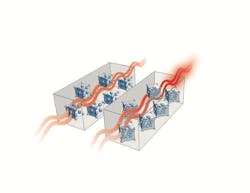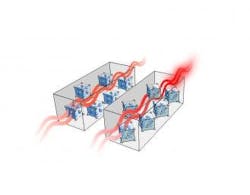Unlocking the Secrets of Uranium Dioxide’s Thermal Conductivity
To better understand the thermal conductivity of uranium dioxide fuel—a material used in the generation of electricity via nuclear fission—Los Alamos National Laboratory is helping the DOE develop advanced predictive computer models of nuclear reactor performance.
Recent Los Alamos research shows that the thermal conductivity of cubic uranium dioxide is strongly affected by interactions between phonons carrying heat and the electron's magnetic spins. Because uranium dioxide is a cubic compound and thermal conductivity is a second-rank tensor (tensors are mathematical objects that can be used to describe physical properties, just like scalars and vectors), the material has always been assumed to be isotropic.
However, when it comes to thermal conductivity, the fuel exhibits unexpected behavior. For example, in single crystals the measured thermal conductivity is different along the side or edge of the cubic unit cell than along the diagonal, even at and above room temperature.
This is critical for the nuclear power industry because some of the uncertainty in historical experimental data may have been due to hidden anisotropy rather than measurement uncertainties or sample impurities, as previously thought. The anisotropy is explained by phonon-spin scattering.
The image illustrates anisotropic thermal conductivity in uranium dioxide.


